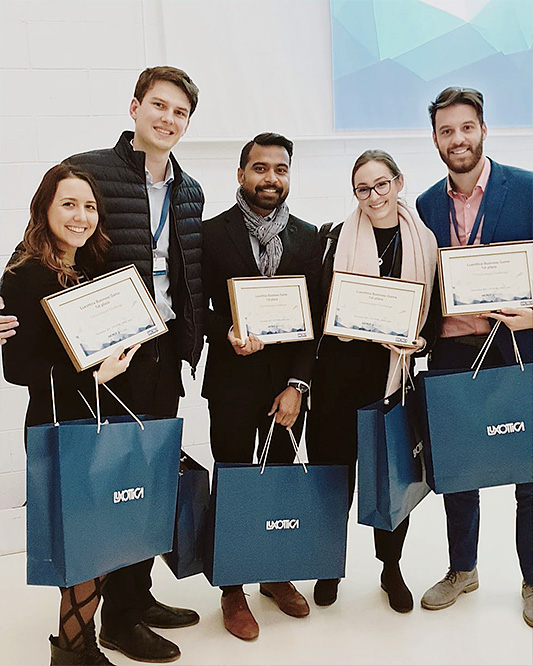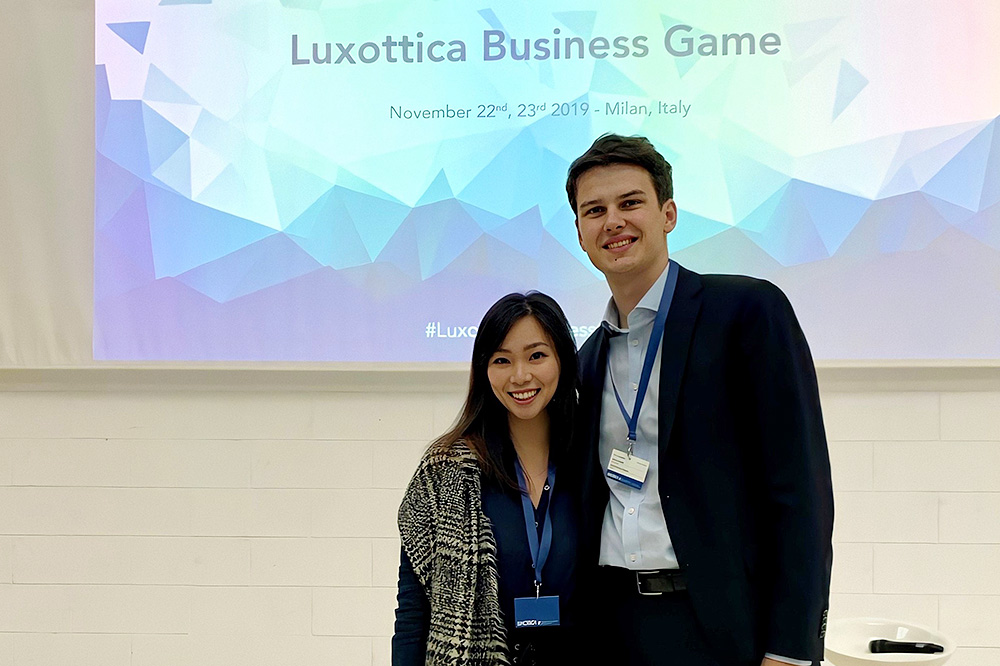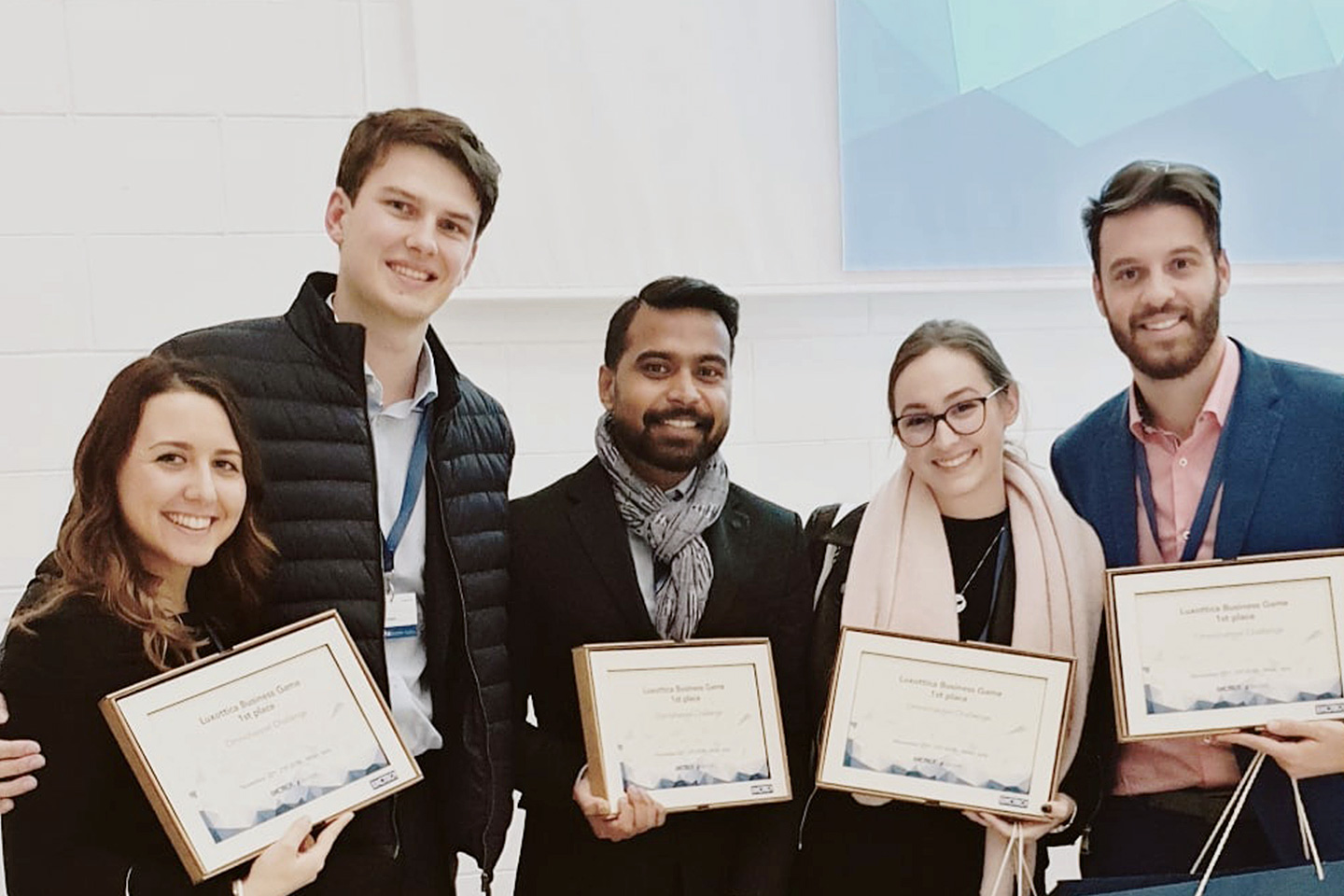Milan may be one of the style capitals of the world, but our Master of Science in Management & CEMS Master in International Management (MIM) students, Huang Yan Ying and Julius Schmid, saw the world of fashion through a very different lens.
While on their CEMS Term Abroad, they joined a two-day business case challenge posed by the world’s largest eyewear conglomerate, Luxottica Group. This is the company behind well-known brands such as Ray Ban, Oakley and Persol. It also makes sunglasses and frames for Chanel, Prada, Versace and many other luxury labels.
70 participants, who were selected based on their resumes, had to present their solutions to three challenges—Design; Omnichannel and Customer Experience. Teams were randomly assigned and then switched-up for each challenge. With their idea of using an app that identifies the eyewear model from a photo that the customer chances upon, Julius and his teammates from other universities won the Omnichannel challenge.
Outside-In speaks to Yan Ying and Julius who have set their eyes on this industry.

Julius (second from left) and his teammates from different universities
Q: Why did you join the competition?
Julius: I really like case competitions as it allows me to form new friendships and expand my network. One gets to meet a lot of business students from different countries and backgrounds, and the challenge enables us to establish a bond quickly. CEMS is very much a global community. A few of the other participants were CEMSies too and it was very easy to bond with them. During the challenge, it is interesting to see how other people come up with completely different solutions to the same problem.
Moreover, I was interested in getting to know Luxottica better. Luxottica is a market leader and successfully integrates design, manufacturing, retail and insurance in the eyewear industry. It also owns two of the most iconic eyewear brands that I grew up with – Ray-Ban and Oakley.
Yan Ying: It was a unique opportunity to learn about Luxottica at their headquarters as they are the world’s biggest eyewear company and I’ve read about them in many business cases. In fact, Ray Ban is my favourite sunglass brand and it was very cool to meet the design team. Milan is the perfect city to learn about the fashion industry.
Q: How did this competition complement your learning?
Julius: It was all about leveraging online channels in an industry, which still relies heavily on physical retail stores. It is not easy to sell glasses online. It was interesting to see what Luxottica is already doing to improve the customer experience through online channels. Often one comes up with the best solutions using their own experiences and needs. My mother, for example, always sends low quality photos of her trying on new glasses to get my opinion on them. We came up with the solution that Luxottica should enable customers to share photos of themselves wearing several frames with their friends and family to let them vote which frame fits best.
Another learning point was applying an existing solution from a different area. For example, we used the idea of “Shazam”, an existing app which allows users to know a song title when they input just a short verse of a song. We came up with “GlassZam” where users can take a photo of the glasses that they chance upon and receive the model type.
Rotating teams with every challenge meant that I had to work with new members every time, but I learned to adapt to new group members and establish trust faster.

Yan Ying (left) and Julius gained valuable experience at the Luxottica Business Challenge in Milan.
Q: What have you learnt at the business school that gave you an edge during the competition?
Julius: With its focus on case solving and group work, I believe NUS prepared me well for these business challenges. Moreover, my last course “Channel and Pricing Strategy” gave me the theoretical knowledge and insights from other industries on omnichannel strategies. The Asian e-commerce market is further developed than the European one. During my time in Singapore, I was exposed to a lot of new online business models and e-commerce solutions.
Q: What did you get out of this competition?
Yan Ying: The competition was very challenging. Luxottica actually gave us real and current company challenges and we have to come up with creative solutions as a team. I learned so many things about Luxottica’s business operations, from designing to its omnichannel strategy to marketing. It was great that I could apply the knowledge I gained from my CEMS courses to real business challenges. I also had the opportunity to present my ideas to Luxottica’s managers. Another reward was making friends from Europe and connecting with Luxottica’s employees.
Q: Do you have any interesting observations or insights to share?
Yan Ying: I never realised just how much work goes into designing a piece of eyewear. Every sunglass design we see in the market took roughly two years to develop and a lot of market research goes behind each design.





